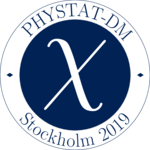Speaker
Description
In order for an experiment to be able to claim discovery of a signal, it must first master its backgrounds and understand how a signal will manifest in the detector. The range of energies involved in the interactions tend to be low due to kinematics so much of an experiment's sensitivity is driven by its threshold. In this region, modeling the detector response can be difficult but I will describe past approaches and on-going work in this area. For experiments, control of backgrounds can be achieved in detector construction by using ultra-pure materials however this is becoming difficult to achieve as experiments improve in sensitivity. As experiments exchange event-by-event discrimination power for lower thresholds, the remaining backgrounds can become significant and searches are no longer background free. The challenge becomes to model these backgrounds so that cuts can be optimized and limits can be set using likelihood-based techniques. I will discuss approaches taken by experiments to understand these backgrounds and model the detector response. Lastly, I will highlight challenges I see in the foresee in the future of direct detection experiments in regards to these two areas.
